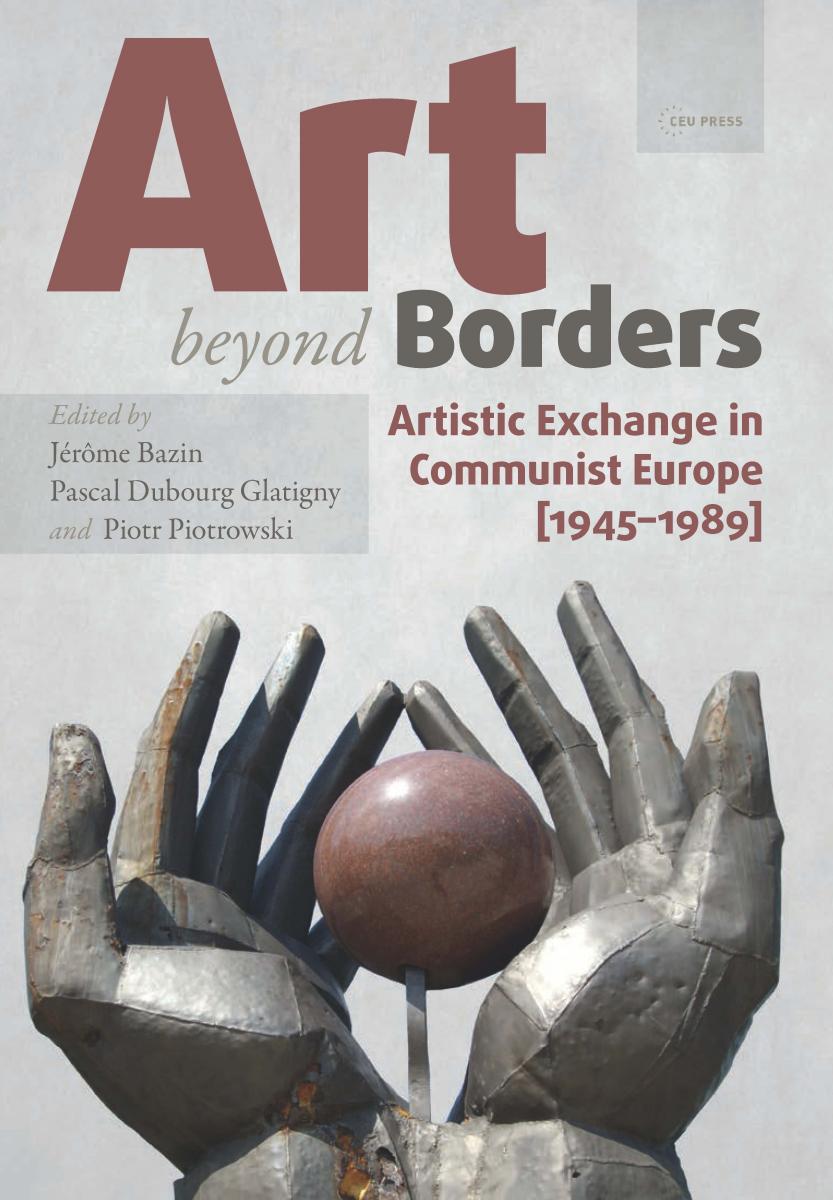Jérôme Bazin, Pascal Dubourg Glatigny, Piotr Piotrowski (eds.): Art beyond Borders: Artistic Exchange in Communist Europe, 1945-1989 (2016)
Filed under book | Tags: · art history, avant-garde, cold war, communism, east-central europe, eastern europe, ideology, networks, propaganda, socialist realism, southeastern europe

“This book presents and analyzes artistic interactions both within the Soviet bloc and with the West between 1945 and 1989. During the Cold War the exchange of artistic ideas and products united Europe’s avant-garde in a most remarkable way. Despite the Iron Curtain and national and political borders there existed a constant flow of artists, artworks, artistic ideas and practices. The geographic borders of these exchanges have yet to be clearly defined. How were networks, centers, peripheries (local, national and international), scales, and distances constructed? How did (neo)avant-garde tendencies relate with officially sanctioned socialist realism?
The literature on the art of Eastern Europe provides a great deal of factual knowledge about a vast cultural space, but mostly through the prism of stereotypes and national preoccupations. By discussing artworks, studying the writings on art, observing artistic evolution and artists’ strategies, as well as the influence of political authorities, art dealers and art critics, the essays in Art beyond Borders compose a transnational history of arts in the Soviet satellite countries in the post war period.”
Publisher CEU Press, Budapest/New York, 2016
Leipzig Studies on the History and Culture of East-Central Europe series, 3
Open access
ISBN 9789633860830, 9633860830
xii+494+24 pages
via x
PDF (126 MB, updated on 2020-11-25)
Comment (0)The Art Strike Papers: The Years Without Art / Neoist Manifestos (1991)
Filed under book | Tags: · art, critique, mail art, manifesto, neoism, networks, protest


Two works bound together back to back.
“The Art Strike Papers is a substantial collection of material produced in response to the Art Strike 1990-93. It is made up entirely of pieces which have appeared since the publication of The Art Strike Handbook in April 1989. Featuring James Mannox, Stewart Home, Sadie Plant, Nik Houghton, Mr Jones, &c.”
“The bulk of the manifestos and poems collected in Stewart Home’s Neoist Manifestos were first published in 1984/5. The manifestos were revised by the author in 1987, additional modifications were made to the text in 1989. This selection was then edited by Simon Strong for AK Press in 1991.”
Publisher AK Press, Stirling, UK, 1991
ISBN 1873176155, 9781873176153
52 & 44 pages
via x
The Art Strike Papers: PDF, HTML
Neoist Manifestos: PDF, HTML
Marie Marchand: The Minitel Saga: A French Success Story (1988)
Filed under book | Tags: · computing, france, networks, technology, telephone, video, virtual communities

The only English-language monograph on the popular Videotex online service Minitel, which operated in France between 1978-2012.
“Minitel was proposed and adopted in 1978, the same year that Simon Nora and Alain Minc submitted their influential report The Computerization of Society in which they coined the term ‘telematics’. Minitel also came on the heels of a “phone-in-every-home” program (pre-dating the One Laptop Per Child project by many decades) that was proposed in 1975 by then-general manager of France Telecom Gérard Théry to increase subscriber telephone lines; Théry firmly believed the telephone was going to be the cornerstone of any computerized country – “A phone in every home is the cutting edge of a computer in every home.” Just three years later in 1978, 2500 people in the Parisian suburb of Vélizy had volunteered to use the system initially called “Teletel.” Marie Marchand tellingly writes in The Minitel Saga: A French Success Story that while “households used the system six times a month on average, consulting 20-odd services for a total connect time of one-and-a-half hours per month…”, “These overall figures concealed a number of pronounced disparities…Age disparity: people under 30 used their terminals more than those over 30. Gender disparity: women used them but little. Class disparity: top executives connected more often than midle management types, who in turn called more often than blue collar workers. Further, a flagrant disparity emerged in terms of services used. Five service providers alone accounted for over half the calls…” (53)
In 1982, instead of delivering increasingly expensive and difficult to update telephone book directories, France Telecom loaned Minitel terminals to residents all across France. By 1988, 3.5 million Minitel sets had been installed with users logging six million hours per month and taking advantage of 8000 services. And by 1999, roughly 9 million terminals could access to the network in turn used by 25 million people who took advantage of 26,000 services. By this time, not only had Minitel inaugurated an era that continues today of disparities between visible and invisible (or even absent) users based on gender, race, sexuality, and socio-economic status, but it also inaugurated the era of online pornography, the use of networks to coordinate student protests, and experiments with pseudonymous online identity.” (Lori Emerson)
Translated and adapted from the French by Mark Murphy
Publisher Larousse, Paris, 1988
ISBN 2035182409, 9782035182401
197 pages
via Lori Emerson
Resources: Minitel.org, Minitel Research Lab.
Comment (0)
